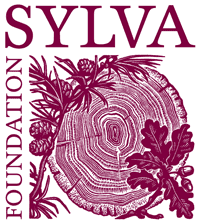Why are Forest Research looking for your help?
Forest Research are developing a model to predict growth in individual trees in mixed species and/or mixed age stands. The work aims to create tools to use in the management of Continuous Cover Forestry (CCF).
As part of this process the model needs to be constrained by setting the upper limit for the predicted maximum growth of individual trees. For this we need to collect data from a sample of open grown trees i.e. trees that have grown free from competition and have therefore reached their full potential in terms of diameter and crown development. If you think you know of an open-grown tree or trees, then you may be able to help us with our research.
What locations and species do we want to sample?
We are looking to select trees from across the whole of Great Britain, to represent different geographical and age ranges. We are particularly keen to get data on the following list:
- Douglas fir
- Scots pine
- oak (pedunculate/sessile/hybrid)
- Sitka spruce (above 40cm dbh)
- Western hemlock
Additional species to be assessed, if present at the same (or close) location as the five listed above, are: beech, birch, Grand fir, Norway spruce and sycamore.
How do we define ‘Open-Grown Trees’?
Trees that have grown free from inter-tree competition throughout their entire life. They can be selected based on the following criteria:
- Ideally a crown free of competition by shading on all sides, throughout its life. In practice, trees with up to a maximum of 25% shading and those subjected to competition for a limited period of time at young age could also be accepted (any deviation from the ideal case should be recorded)
- Branches extending as low as possible. For some species it could be to the ground (or nearly so), for others allowance should be made for the natural receding of lower branches (e.g. Scots pine or oak)
- No forking for the entire length of the tree (this is below the spring of crown in broadleaves)
- No evidence of pruning, shearing, browsing, decay, storm or insect damage
What measurements will be taken?
We would like to make an assessment of each suitable open ground tree identified. This will include measurement of diameter at breast height, total height, height of the live crown and crown width. We will ensure that any necessary permissions are granted prior to us undertaking any assessment.
If you think you can help please contact Ian Craig ian.craig@forestry.gsi.gov.uk or
Catia Arcangeli catia.arcangeli@forestry.gsi.gov.uk
If you would like to know more about our research on the modelling of mixed-age and mixed species stands please visit www.forestry.gov.uk/fr/infd-8bxetz



